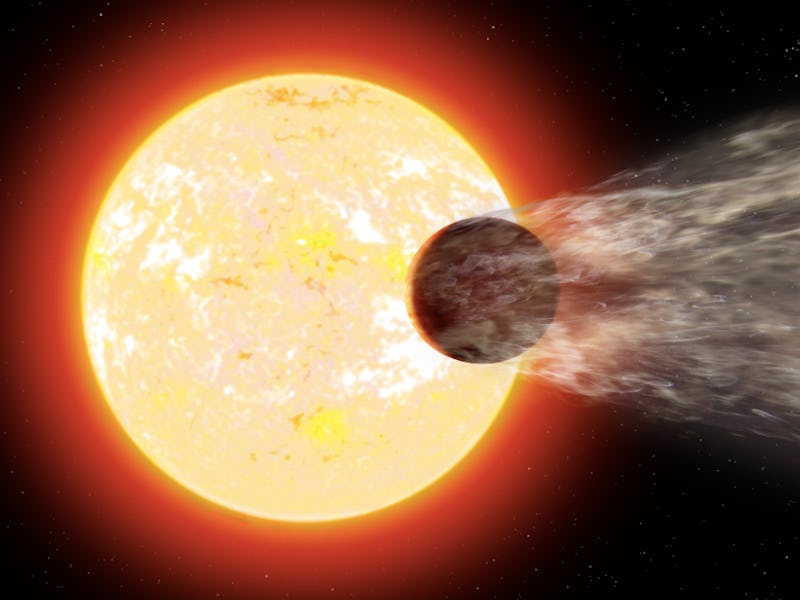"Space Weather" is Ruining Our Chances of Living on Exoplanets
Stellar eruptions can rip away a planet's atmosphere.

Planet-hunting astronomers might be disappointed to learn that common stellar eruptions, known as coronal mass ejections (CMEs), could have a significant impact on whether or not newly discovered Earth-like exoplanets could in fact support life.
A recent study took information about CMEs in our own solar system and applied it to a cool star system — a popular place to look for planets that could support life in a similar way to Earth. CMEs are a typical aspect of “space weather,” but on a planet that exists closer to its star the effects of CMEs would exponentially increase. And in systems with low mass, cooler stars, habitable zones can be much closer to the star than they are in our solar system. Therein lies the problem.
CMEs can compress a planet’s magnetosphere — the protective magnetic bubble shielding the planet — and thus exposes a planet’s atmosphere and even sweep it away from a planet. This would in effect expose an exoplanet to harmful x-rays from its host star, and definitely have a serious effect on any potential lifeforms.
“While these cool stars may be the most abundant, and seem to offer the best prospects for finding life elsewhere, we find that they can be a lot more dangerous to live around due to their CMEs” said graduate student Marc Kornbleuth, who assisted on the project.
The new research is being presented Monday at the National Astronomy Meeting at the University of Hull by Dr. Christina Kay, of the NASA Goddard Flight Center.
The team modelled the trajectory of theoretical CMEs from the cool star V374 Pegasi, and realized that the star’s strong magnetic fields even push CMEs to the astrophysical current sheet, where they remain trapped.
Although this sounds incredibly bleak when it comes to our search for life, there’s still hope for the TRAPPIST system, where three potentially habitable planets reside. TRAPPIST-1, the ultra-cool dwarf star in the TRAPPIST system is cooler — and therefor much more stable — than other stellar varieties. Being that it’s an example of a dwarf that’s not nearly as volatile as other stars, it’s still possible that we aren’t alone in the universe.
Abstract:
Solar coronal mass ejections (CMEs) produce adverse space weather effects at Earth. Planets in the close habitable zone of magnetically active M dwarfs may experience more extreme space weather than at Earth, including frequent CME impacts leading to atmospheric erosion and leaving the surface exposed to extreme flare activity. Similar erosion may occur for hot Jupiters with close orbits around solar-like stars. We have developed a model, Forecasting a CME’s Altered Trajectory (ForeCAT), which predicts a CME’s deflection. We adapt ForeCAT to simulate CME deflections for the mid-type M dwarf V374 Peg and hot Jupiters with solar-type hosts. V374 Peg’s strong magnetic fields can trap CMEs at the M dwarfs’s Astrospheric Current Sheet, the location of the minimum in the background magnetic field. Solar-type CMEs behave similarly, but have much smaller deflections and do not get trapped at the Astrospheric Current Sheet. The probability of planetary impact decreases with increasing inclination of the planetary orbit with respect to the Astrospheric Current Sheet - 0.5 to 5 CME impacts per day for M dwarf exoplanets, 0.05 to 0.5 CME impacts per day for solar-type hot Jupiters. We determine the minimum planetary magnetic field necessary to shield a planet’s atmosphere from the CME impacts. M dwarf exoplanets require values between tens and hundreds of Gauss. Hot Jupiters around a solar-type star, however, require a more reasonable <30 G. These values exceed the magnitude required to shield a planet from the stellar wind, suggesting CMEs may be the key driver of atmospheric losses.